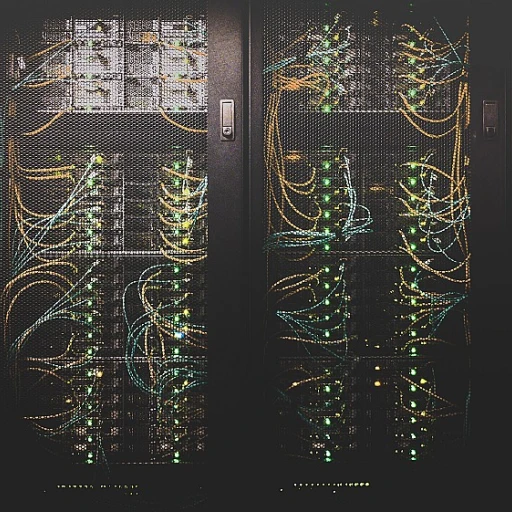The Rise of Automation in Software Testing
The ascent of automated solutions
In recent years, the world of software testing has undergone a transformative shift with the ascent of automated solutions. Automation in software testing is not just a trend but a necessity for many organizations striving to enhance efficiency and accuracy. As software development lifecycles become more condensed due to increasing competition and demand for rapid delivery, automated testing has emerged as an indispensable asset.
The traditional manual testing methods are gradually giving way to automated tools that not only save time but also minimize human error. These tools are engineered to execute repetitive and complex tasks, enabling testers to focus on more critical elements like exploratory testing and usability testing. Automation frameworks and tools have matured significantly, providing robust solutions for testing applications across various platforms and devices.
Moreover, the integration of automated testing into continuous integration/continuous deployment (CI/CD) pipelines is fostering a seamless development process. Such integration is pivotal for shift left testing, where testing is incorporated early in the development cycle, as well as continuous testing strategies aimed at ensuring quality throughout the development process. By embedding automated testing into these frameworks, businesses can adapt more swiftly to changes and meet the market's expectations without compromising product quality.
The future landscape of automated solutions in software testing will continue to evolve with advancements in technologies like artificial intelligence and machine learning. These intelligent systems are set to redefine how we approach testing, making it more predictive and adaptive. As we embark on this journey, it's clear that the automation trend will remain at the forefront, driving innovation and efficiency in the field of software testing.
For those interested in exploring how automation is transforming other areas of software development, the evolution of a
webflow development agency offers valuable insights into the future paths and trends in the industry.
AI and Machine Learning: The Game Changers
The Intelligent Transformation of Software Testing
The integration of artificial intelligence (AI) and machine learning in software testing is revolutionizing the industry, propelling it into a new era of efficiency and accuracy. These technologies serve as powerful game changers, offering the potential to significantly enhance testing processes and outcomes.
AI-driven tools and machine learning algorithms are no longer confined to theoretical discussions; they have become a tangible reality, leading to noticeable improvements in error detection, predictive analysis, and test case generation. These solutions help testers identify patterns and anomalies in vast datasets that would be beyond the reach of traditional methods, thus enabling teams to proactively address potential issues.
Moreover, these innovations facilitate more efficient resource allocation by adapting and learning from previous iterations, which is crucial in the fast-paced world of software development. By drawing upon past experiences, AI can optimize testing strategies to focus only on areas that require attention, reducing redundant tasks and accelerating the overall process.
Furthermore, the intelligent transformation in software testing doesn’t occur in isolation. It is part of a broader conversation regarding the evolution of the entire software ecosystem. A comprehensive exploration of the expected transitions can be found in this insightful piece by Poool Agency, offering a detailed understanding of how software development landscapes are changing.
As the demand for speed and quality intensifies, the adoption of AI and machine learning in software testing is not just a beneficial addition but a critical component. It aligns seamlessly with the continuous integration and deployment strategies described earlier and enables organizations to remain competitive by delivering better software products swiftly and effectively.
Continuous Testing: Keeping Pace with Development
Adapting Testing Practices to Fast-Paced Development
As businesses accelerate their development cycles to stay competitive, software testing must evolve to keep up. The classic, lengthy testing phases no longer fit into agile and DevOps environments where rapid deployment is crucial. Continuous testing emerges as the solution to this challenge, streamlining the testing process and aligning it with the fast pace of modern software development.
The idea behind continuous testing is to integrate testing activities within every stage of development. This integration allows for instantaneous feedback, which is essential for maintaining quality while accelerating release schedules. Moreover, it enhances collaboration between developers, testers, and operations teams, ensuring that everyone is on the same page and that bugs are caught early.
Implementing continuous testing isn't just about adding more test scripts into each development cycle. It involves a strategic blend of automation, as discussed in the
future of software development, and a cultural shift towards a quality-first mindset. This approach substantially reduces the time-to-market by catching defects promptly and providing better predictability in release times.
Moreover, as part of this integrated approach, feedback loops become more immediate and precise. Real-time monitoring tools and dashboards can offer insights no longer limited to the post-release phase. Testers and other stakeholders can see results instantly and make informed decisions, improving the product before it reaches the end user.
Furthermore, as emphasized by the Poool agency in reshaping the
future of software services, keeping pace with development doesn't merely mean 'faster'. It reflects a nuanced adoption of innovative practices such as AI-driven test automation and shift left testing. These methodologies ensure that testing is woven into the very fabric of the software lifecycle, thereby fortifying quality without hindering speed.
By continually adapting testing methodologies to match the evolution of software development practices, businesses can ensure robust, dynamic products that meet both market demands and user expectations. This evolution underscores a broader transformation in the software industry, where agility and quality go hand in hand.
Shift Left Testing: A Proactive Approach
Adopting a Forward-Thinking Test Strategy
As software development continues to evolve, so too must the strategies we employ to ensure its quality. The shift left testing methodology represents a radical change in perspective—moving testing activities earlier in the software development life cycle. This proactive approach aims to identify and address potential issues at the outset rather than scrambling to fix problems post-deployment.
Traditionally, testing has often been perceived as a bottleneck, delaying the release of a product as teams scramble to find and fix bugs. However, with shift left testing, this perception is changed as it integrates testing into every phase of development. By promoting a culture of quality from the very start, software teams can catch defects before they snowball into significant issues, resulting in smoother deployments and more reliable software.
In alignment with the rise of automated testing and AI-driven solutions discussed earlier, shifting left encourages developers and testers to embrace a collaborative mindset. Automation tools can be utilized from day one, running continuous tests that allow for instant feedback loops. This iterative process not only helps in detecting defects but also fosters innovation as teams are no longer confined by the pressures of pre-release testing.
Additionally, this approach greatly complements continuous testing efforts, which are crucial in a fast-paced development environment. By embedding testing and quality checks within the very fabric of the software creation process, businesses can thrive in providing fast, dependable releases that keep pace with market demands. The future of software testing is undoubtedly moving towards an integrated, cohesive strategy that prioritizes quality at every stage.
Looking ahead, it is clear that shift left testing will only grow in prominence as it promises greater efficiency and higher quality outcomes in software development. Embracing this approach, alongside other forward-thinking trends, can position businesses to lead in a competitive and rapidly evolving market.
Cloud-Based Testing: Flexibility and Scalability
Cloud testing advantages: adaptability and growth potential
As software development landscapes evolve at an accelerated pace, the necessity for adaptable and scalable testing methods becomes paramount. This is where cloud-based testing steps into the spotlight, offering an array of benefits that align seamlessly with contemporary development practices.
The adoption of cloud-based testing provides unparalleled flexibility. With the ability to access testing resources anytime and anywhere, teams can collaborate effortlessly across geographical boundaries. This flexibility drastically reduces the time lag often associated with traditional testing infrastructures, streamlining processes to match the dynamic cycles found in modern development projects.
The scalability offered by cloud environments also caters to fluctuating demands. Whether you're deploying a new application to millions or just hundreds of users, cloud testing allows for instant scaling up or down, ensuring resources are optimized and costs are managed efficiently. This ability to adapt quickly is particularly valuable when considering the rise of automation in testing, allowing enterprises to leverage resources as needed without overcommitting.
With the use of cloud-based testing, companies can also tap into a broad array of testing tools and platforms, integrating the latest innovations in AI and machine learning without the need for significant initial investment. This not only bridges gaps in in-house expertise but aligns testing capabilities with the innovative trends reshaping the software testing landscape.
As software continues to develop in complexity and scale, the cloud offers a future-ready solution that keeps pace with these advancements, ensuring that testing methodologies remain efficient, effective, and economically viable. Embracing cloud-based testing not only meets current demands but also prepares organizations for future challenges as they move towards increasingly sophisticated applications.
Future Trends in Software Testing
Key trends shaping the testing landscape
As the software industry rapidly evolves, it's important to stay ahead of the emerging trends that are reshaping the landscape of software testing. These trends not only reflect technological advancements but also the shifting demands and expectations from users and organizations alike. One prominent trend is the significant emphasis on enhancing test automation. As discussed in earlier sections, automation is gaining traction due to its ability to increase efficiency, reduce human error, and improve the speed of deployment. AI and machine learning are also playing an increasingly crucial role, bringing more sophistication and predictive capabilities into the testing process.
Moreover, continuous testing has become an integral part of the Agile and DevOps methodologies, ensuring that development keeps pace with testing. With this approach, teams can address issues promptly and enhance software quality, swiftly meeting market demands. Shift left testing continues to gain momentum, advocating for early involvement of testing in the software development lifecycle to catch defects before they escalate.
Cloud-based testing is another notable trend, offering unprecedented flexibility and scalability, even accommodating global teams seamlessly. It also supports the implementation of various other trends by allowing for easy access to environments and resources.
Looking forward, we can anticipate further advancements such as increased use of automated tooling integrated with AI, wider adoption of testing as a continuous process, and a stronger emphasis on security testing as cybersecurity risks rise. Organizations will aim to deliver software that's not only reliable but also secure and well-performing in diverse environments. Adapting to these trends will be imperative for maintaining competitive edge and delivering high-quality products in a swiftly transforming digital world.






-large-teaser.webp)









